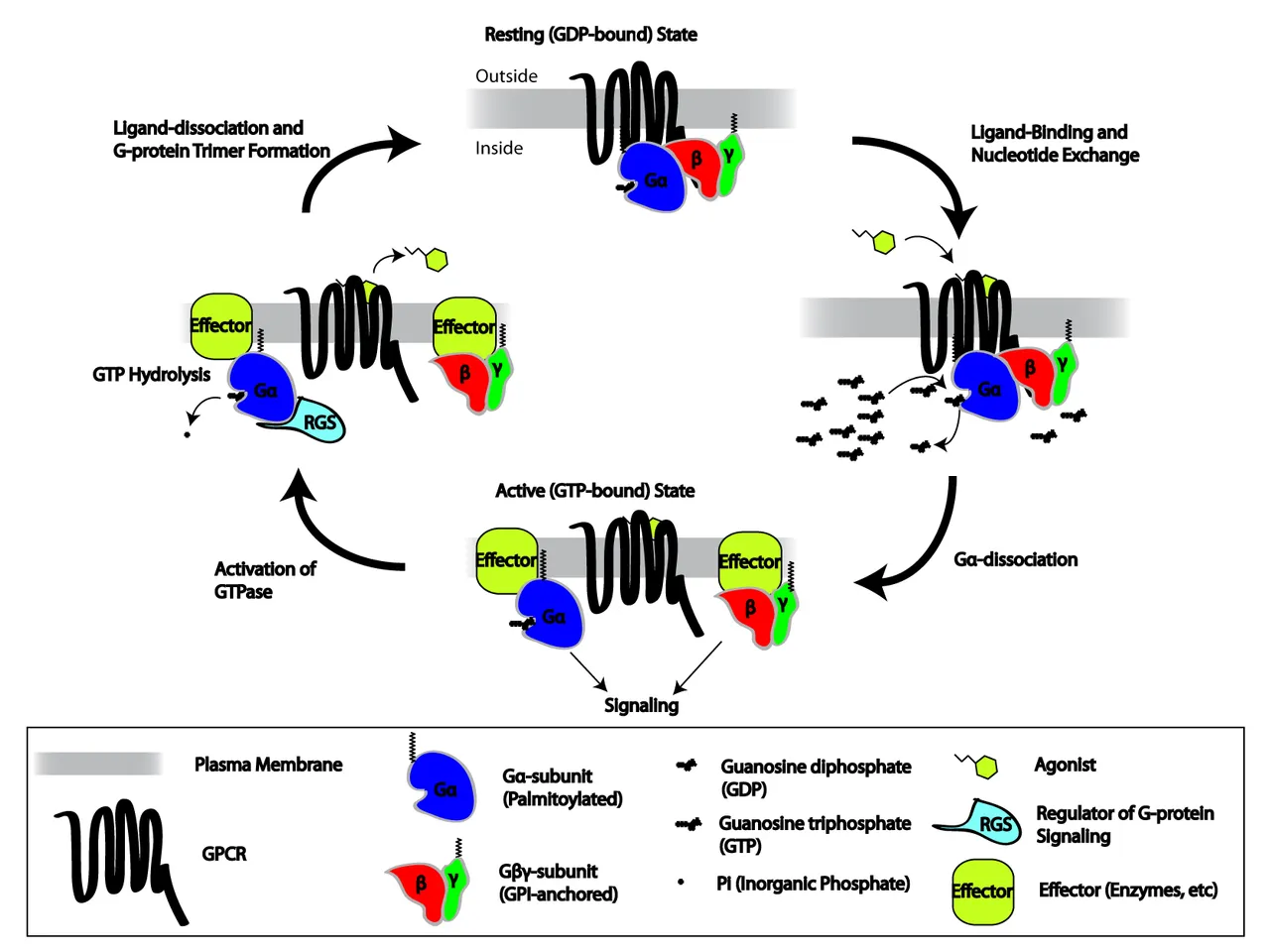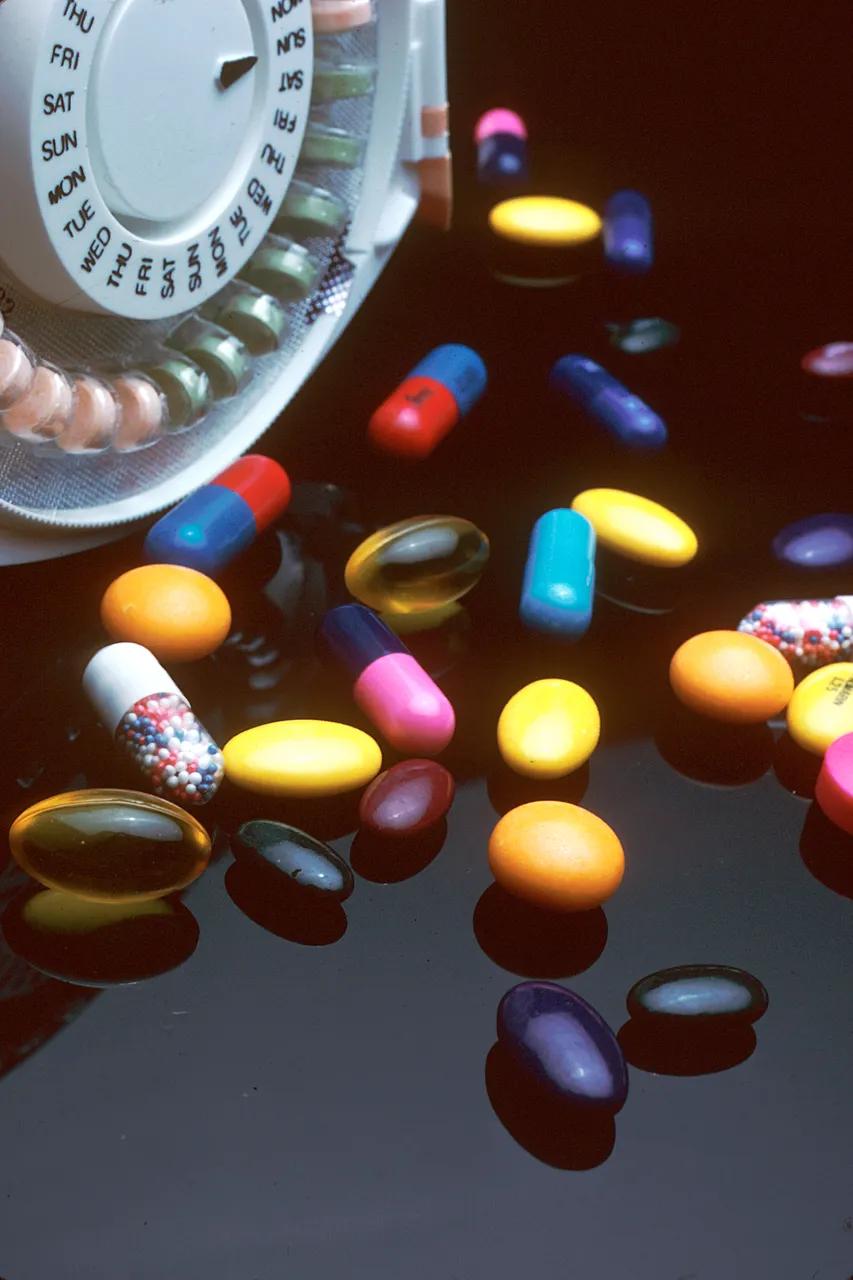Hello everyone, its weekend and I guess everyone is excited about that. Maybe we would have some time to go through some core physiology and pharmacology today with the first part of this series.
We will be taking a look at drug interaction with the nervous system as regards drug utilization in the body. However, the information obtained from this article doesn’t in any way qualify the reader for drug prescription, neither does it support self-medication. Readers are only expected to discover how the drugs they take actually works in their body. Hope to see you throughout this series…
Autonomic physiology
The nervous system creates a reliable communication network between our senses and the environment which surrounds it, this includes other parts of our body exposed to the external environment and also the internal body system. The nervous system ensures balance through the reception of signals from its surroundings and reacting correctly to these received signals to ensure that the body continues in normal function, though making some compromise in some cases.

The nervous system. Source:Wikimedia - CC BY-SA 3.0.
The brain and the spinal cord makes up the central nervous system with the brain as the centre of integration and the command centre, information in the form of molecular signals received from other parts of body and the surrounding environment are transported to the brain where they are decoded and commands sent to the effector organs which includes the muscles and the body organs which makes moves or secretions in response to the signal received from the nervous system. Secretions made by effector organs are mainly hormones, these are transported from the point of synthesis to the target organs.
The reception of signals and dissemination of effects from the integrated signals are done via the peripheral nervous system. The peripheral nervous system includes nerves arising from the brain and the spinal cord, these are known as cranial and spinal nerves respectively. The nerve is a bundle of axons located outside the central nervous system, they are distinguished in terms of the action they perform and the organ or tissue to which they relay their information. While some nerves consists of only sensory fibres and serves the sense organs (eyes, nose, ears, rogue and skin), other nerves contains sensory fibres and serves the muscle tissues while most nerves consists of both motor and sensory nerve fibres; thus they are named sensory, motor and mixed nerves respectively.
The axon which makes up the nerves is a component of the neuron, the neuron is the functional unit of the nervous system, they are specially structured to respond to physical and chemical stimuli, conduct electrochemical impulses and release chemical regulators to enable sensitivity, memory, muscular action, gland secretions and learning.

The neuron is the functional unit of the nervous system. Source:Wikimedia - CC BY-SA 3.0.
Motor neurons are generally somatic or autonomic, somatic motor neurons are responsible for voluntary and reflex control of skeletal muscle, reflex actions are in turn controlled by the spinal cord while the brain is the integration centre for voluntary actions
The Autonomic nervous system
The autonomic nervous system sends and recieves impulses from the involuntary effectors, the smooth and cardiac muscles and the glands. Smooth muscles are found in the intestines and vessels and hence controls the movement of these tissues, cardiac muscles are muscles of the heart which are structured to maintain it’s action throughout life as a pause in its actions would be fatal. Glands are the body organs which are specialized to synthesize and secrete special chemicals which stimulates or inhibit certain body actions in response to the homeostatic requirements of the body.

Scheme of The autonomic nervous system distribution. Source:Wikiwand - CC BY-SA 3.0.
The cell bodies of the autonomic neurons that innervates these organs are located outside the central nervous system in the autonomic ganglia. The subdivisions of the autonomic nervous system are sympathetic and parasympathetic nervous system which consists of sympathetic and parasympathetic neurons.
The parasympathetic nervous system consists of cranial and sacral outflow, while the cranial outflow supplies the visceral structures in the head through the occulomotor, glossopharyngeal and facial nerves and the visceral structured in the thorax and upper abdomen via the vagus nerves which are the longest nerves transporting impulses from the brain; the sacral outflow supplies the pelvic visceral through the pelvic branch of the S2-S4 (second to fourth sacral spinal nerves). The preganglionic fibres of both sacral and spinal outflows end on short postganlionic neurons located near these structures.
Axons of the preganglionic neurons of the sympathetic nervous system exits the spinal cord with the ventral roots of the first thoracic nerve to the fourth lumbar nerves (T1-L4 nerves), they pass via the white rami communicantes to the prevertebral sympathetic ganglion chain where most of them ends on the cell bodies of the post ganglionic neurons, while the axons of some postganglionic pass to the viscera in the various sympathetic nerves, others re-enters the spinal nerves through the grey rami communicantes from the chain ganglia and are distributed to autonomic effectors in the areas supplied by these nerves. Postganglionic nerves to the head originates from the superior, middle and stellate ganglia in the in the cranial extension of the sympathetic ganglion chain and travel to the effectors with the blood vessels.
The sympathetic nervous system is said to be stimulatory in action and hence dubbed the ‘flight and fight' nervous system as it prepares the body to take actions, the parasympathetic nervous system is inhibitory in its net effect and makes for the relaxation of the body after intense stimulation by impulses from the sympathetic nervous impulses. This is due to the effect of the different neurotransmitters placed at the terminals of the axons of the neurons of the nerves which makes up these parts of the nervous system.
Neurotransmitters are chemicals synthesized by the nerves and stored in the synaptic vesicles which on release stimulates the transmission of certain ions which stimulates the nerves in different ways. Calcium ions are stimulatory in action while chloride ions are inhibitory, thus the transmission of these ions would produce different effects, hence these different neurotransmitters stimulates the transmission of varied ions and hence produce different net effects on the body action. The receptor also plays a very important role in the sort of action produced by the transmission of these ions.

Neurotransmission. Source:Wikimedia - CC BY-SA 3.0.
Receptors in autonomic transmission
Receptors are macromolecules usually a protein molecule or polysaccharide or a glycoprotein on surface or cytoplasm of the target cell to which the neurotransmitters binds to initiate intracellular actions through a change in membrane potential or phosphorylation of proteins which leads to a general action of an organ or a tissue. In muscles, the effect of the neurotransmitters through the receptors are depolarization and repolarization due to change in ion transport which causes a change in membrane potential in form in electrical charges.
Receptors are common terms used not only in nervous physiology, in other disciplines receptors are generally parts of a setup which receives signals from its surroundings, this is actually the basic concept of receptors. This can also be seen in enzyme action and in drug actions.
Receptors act by binding to the ligand in a lock and key fit theory which is in correspondence with the Michaelis Mentens’ theory of receptor action. The ligand may be an enzyme, drug or nervous impulse and hence similar receptors are applied in pharmacology, enzymology and physiology. The constituent of a receptor it’s sstructure and location determines the type of ligand which binds to them and hence the action which it performs. Receptors in autonomic nervous actions are named according to the neurotransmitter which binds to them, they may be classified based composition as…
ligand gated ion channels: Ligand gated ion channels are superimposed proteins which forms a gate across the cell membrane. This ‘gate’ opens when a ligands such as local mediators, hormones and neurotransmitters binds to the surface of these proteins. The superimposed proteins separate and allow the passage of ions through the cell membrane into the intracellular part of the cells to initiate intracellular actions through a change in the ion concentration of the intracellular part of the cell which causes a change in membrane potential.
Intracellular receptors: These receptors are located inside the cell, this may be in the cell cytoplasm or the nuclear membrane. The cell membrane is made of a lipodial layer and hence is relatively impermeable to hydrophilic substances such as growth hormones. However, lipophylic substances and certain hydrophilic hormones such as the thyroid hormones transverse the cell surface to attach to these receptors and initiate intracellular actions which either leads to protein synthesis to enable transcription of the hormonal impulses this is relatively slower, nervous impulses are transported much faster.
Enzyme-linked receptors: Some Enzymes are activated through phosphorylation, enzyme linked receptors are likened to G-coupled protein receptors, and the enzymes are activated in a similar way as in the G-coupled protein receptors by phosphorylation.

G-coupled receptor cycle . Source:Wikimedia - CC BY-SA 3.0.
G-coupled protein receptors: G-proteins binds GTP, the guanosine analog of ATP, when a signal reaches the g-proteins, the protein exchanges GDP for GTP. The G proteins are made up of three subunits α,β and Y, the α subunit is bound to GDP. When a ligand binds to a G coupled receptor, the GDP is exchanged for GTP and the α subunit separated from the combined β and Y subunit. The separation of the α subunits brings about the biological of a G-coupled protein receptor transmitted action.
According to mode of action, receptors are classified into ionotropic and metabotropic receptors.
Metabotropic receptors are receptors for stimulatory and inhibitory transmitters, they mediate the inflow of cations for stimulatory actions, mainly sodium ions (Na+), they are ligand gated ions. For inhibitory transmitters, such as glycine and Gamma amino butyric acid (GABA), these receptors allows the inflow of anions such as chloride ions (Cl+), they are ligand gated ion channels. Metabotropic receptors are coupled to G-proteins and stimulates the synthesis of second messengers.

mode of action of ionotropic and Metabotropic receptors. Source:Wikimedia - CC BY-SA 3.0.
Receptors in Autonomic pharmacology
Drugs are substances, usually high molecular weight substances which binds to the body’s regulatory molecules and through chemical processes either enhances or inhibit the effect of these molecules, when used correctly, drugs are used to treat, prevent or diagnose diseases.

prescription drugs. Source:Wikipedia - CC BY-SA 3.0.
Muscarinic receptors responds to muscarine and are blocked by atropine, and they influence the CAMP (Cyclic Adenosine Monophophate) level In the postsynaptic cells. Five set of Muscarinic receptors have been described, denoted by numbers 1-5, while M1, M3 and M5 Muscarinic receptors increase the level of CAMP in the postsynaptic cells, M2 and M4 reduces it, hence these receptors are Metabotropic and G-proteins coupled. Nicotinic receptors responds to nicotine, an alkaloid which is contained in tobacco, the actions of the nicotine in tobacco is based on the nicotinic receptor’s action, they are ionotropic and ligand gated.
Adrenergic receptors in sympathetic actions
Cholinergic reception in parasympathetic nervous system is relatively less complex when compared to the Adrenergic receptors system in the sympathetic nervous system.
Adrenergic neurons release norepinephrine and epinephrine. Synthesis of norepinephrine begins with the conversion of protein tyrosine to dihydroxyphenylalanine (DOPA) by enzyme Tyrosine hydroxylase, on removal of a molecule of carbon dioxide from DOPA by DOPA decarboxylase, Dopamine is synthesized which is converted to norepinephrine by dopamine hydroxylase, methyl transferase completes the synthesis of epinephrine. Epinephrine, Norepinephrine and Dopamine are neurotransmitters, they are stored in the vesicles after synthesis and released by the neurons on reception of the correct impulse and binds to Adrenergic receptors.

Epinephrine. Source:Wikimedia - CC BY-SA 3.0.
α1 Adrenergic receptors are involved in smooth muscle contraction while α2 receptors which are located in the presynaptic nerve endings of organs such as pancrease controls secretions from the pancreatic glands. α receptors shows a decreasing order of potency from Epinephrine to isoproterenol (epinephrine > norepinephrine > isoproterenol).
β receptors shows strong response to isoproterenol and a relatively lesser sensitivity to epinephrine and norepinephrine, binding of these ligand to beta receptors activates G proteins and causes the synthesis of CAMP from ATP, CAMP activates protein kinase A this results in a net excitatory effects on the hearth and inhibitory effect on the bronchial muscles, they are classified into β1 and β2 receptors.

beta-2 Adrenergic receptor. Source:Wikimedia - CC BY-SA 3.0.
Agonistic drugs stimulates the Adrenergic receptors as they have an intrinsic activity and sufficient affinity for these receptors. Adrenergic agonists may act by binding directly to Adrenergic receptors without interaction with the presynaptic or postsynaptic neurons, this is seen in isoproterenol action. Indirect agonists act by causing the release of norepinephrine. Ephedrine, a long acting plant alkaloid may act via any of these two means.

Agonists and antagonist drugs action. Source:Wikimedia - CC BY-SA 3.0.
In conclusion..
The knowledge of these agonists and blockers are utilized in drug production to produce drugs which mimics the action of these chemicals and to perform the action of these neurotransmitters which is dampened in pathologic conditions.
Epinephrine and epinephrine mimicking drugs are used in high doses to produce α effect and in low doses to produce a β effect, it can be used in the treatment of asthma, bronchospasm, anaphylactic shock and glaucoma.

Epinephrine medication. Source:Wikimedia - CC BY-SA 3.0.
Beta-blockers such as propanol causes negative chronotropic and ionotropic effect and are used in angina and glaucoma management. Most other drugs acts via this means.
References
1.Review of medical physiology 22nd edition by William F. Ganong
3.Drug-receptor interaction~msdmanual
4.Basic pharmacodynamics-drug receptor interaction explained
If you write STEM (Science, Technology, Engineering, and Mathematics) related posts, consider joining #steemSTEM on steemit chat or discord here. If you are from Nigeria, you may want to include the #stemng tag in your post. You can visit this blog by @stemng for more details. You can also check this blog post by @steemstem here and this guidelines here for help on how to be a member of @steemstem. Please also check this blog post from @steemstem on proper use of images devoid of copyright issues here.
